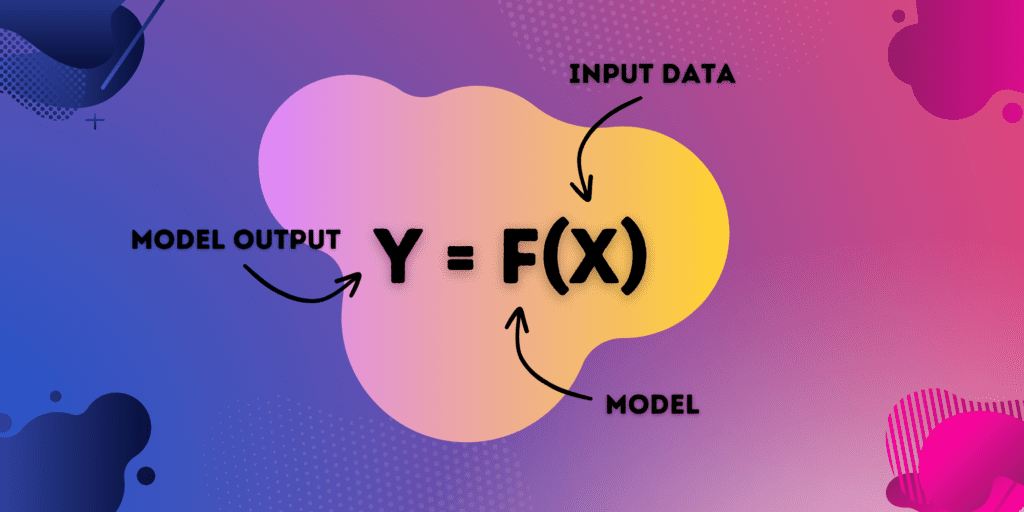Generative AI is clearly a hot topic at the moment.
Whether we understand it or not, most of us are already getting fed up with reading headlines about Chat-GPT and other AI systems.
Some people hail it as the turning point of a new revolution, and others see it as a race to the bottom. Frankly, I’m probably in the camp most of you reading this are in, I’m not sure where to stand on this topic.
What I do know is that any cultural shift has implications on how we, as marketers, approach our job.
The problem I’ve found is that there’s a lot of:
- Noise 🤷♀️
- Misinformation 🤷♀️
- Complicated language 🤷♀️
So, I decided to sign up for a series of free courses offered by Google introducing AI and the new technologies associated with it.
I’m taking this course as a total newbie with the express aim of translating what I learn into normal, readable language. My hope is that, in doing this, you don’t need to take the course as you can access the relevant takeaways in an easy, skimmable and relevant format.
This article is part 1 in a series. Today, we’re looking at an introduction to the subject and basic definitions.
I hope this article will be useful. Do drop us an email with feedback on what you would find helpful on this subject, I’d be glad to cover it.
Strap in, let’s go 🚀
Starting with definitions…
It’s always good to start exploring a concept by understanding the headlines. What is it? What isn’t it? How does it work? What does it mean for Me?
According to Google, Generative AI is:
A type of artificial intelligence technology that can generate content
Google 2023
Ok, great start! I already understand as a marketer that content is important. This already throws up some fundamental questions for me:
- Is the content any good?
- Is it quicker than human-generated content?
- Does it cost a lot of money to use it?
- Is it ethical to use?
Before I get too carried away answering those questions though, I think it’s worth continuing with the definitions.
For example, what even is Artificial Intelligence (besides an underrated 00s film)?
Artificial Inteligence is…
Google describes it as a discipline within the branch of computer science with the aim of creating intelligent “agents”. These agents can learn to think, reason and act like humans.
Crucially, AI has the ability to act with autonomy (it’s at this point the anti-Skynet crowd starts twitching).
The course goes on to describe a sub-field of AI called ‘Machine Learning’.
Essentially, Google describes this as a system that trains a model from input data. Where this gets exciting is, these systems can be trained without programming. They literally learn!
There are apparently 2 models of Machine Learning systems: Unsupervised ones and Supervised ones.
The key difference between the two models has to do with if data is tagged or not.
Supervised models are better suited to predict future outcomes based on past outcomes. Unsupervised models are better suited to discovering patterns in data.
Diving even deeper, the course then walks you through a subset of Machine Learning they call, ‘Deep Learning’.
That’s super deep!
Deep learning uses Neural Networks as a means of growing in ‘intelligence’. These networks are designed to function in exactly the same way as information is stored, transported and processed within the human brain!
Neural Networks are fascinating because they process both supervised and unsupervised data – a best-of-both-worlds model! This makes them much more complicated but, it also means they can process much more complicated data and produce even more outstanding results.
My favourite example of this in action is when Youtuber SethBling trained a neural network to complete Super Mario Brothers!
Get to the point!
At this point in the course, I was thinking that it was all really interesting but how did it relate to Generative AI and, more importantly, how could I apply it to a marketing context?
My prayers must have been answered because, at this point in the course, Generative AI was introduced.
Generative AI is a model of Deep Learning that takes both Labelled and Unlabelled data, applies Supervised and Unsupervised systems and outputs something new. In human speak, it’ll take what you throw at it and use that to generate new output.
The rule of thumb to tell if you’re looking at Generative AI or another model is quite simple and useful. If your AI is outputting:
- Natural language (more on this later)
- Images
- Audio
You’re working with a form of Generative AI. If, on the other hand, your AI is outputting:
- Numbers
- Class
- Discrete
- Probability
Well, my friend, you’re probably working with something other than Generative AI.

If Y is a number, it ain’t gnerative AI.
The Juice
And so, we’ve arrived at our first lightbulb moment 💡
Generative AI builds on the past in a brilliant way.
Whereas before, we would need to program the model to get the output we want now, we only need to ask it a question (in natural language).
An example of this could be:
Before
Tell the computer in code what an elephant is. Describe its characteristics in detail. The computer could then output a definition of an elephant based on the information you gave it.
Now
Give the computer a pile of books about elephants.
Ask the computer, “What is an elephant”. The computer will then give you a definition of what an elephant is based on all it has learned!
Generative AI: a definition for normies.
With all that context, Google defines Generative AI in plain terms:
It’s a type of AI that creates new content from what it has learned based on existing content. Learning from existing content in this context is called, training. Training results in what is called a statistical model.
When you prompt a Generative AI, it uses the statistical model to guess what the right response could be and then generates a response based on that guess.
With me so far?

Image created by Generative AI tool: Midjourney
Outputs and Inputs
One aspect of Google’s course that really resonated with me (once the context was out of the way) was this:
The quality of the output is directly linked to the quality of the input.
I think this is where we start seeing implications for marketers. Any old fool can use Generative AI to create something. It takes someone who knows how to prompt well, to get good-quality output.
Key takeaways.
Clearly, this was just the introduction. The course is well worth taking and is free to take. I learned a lot about the technology behind popular AI tools we read about seemingly all the time such as Chat-GPT.
I don’t know if the course answered my key questions. It did give me a deeper understanding of what Generative AI is and isn’t and has started me to consider some use cases.
I think some obvious use cases could be:
- Web content (I’m not convinced this will perform as well as well-researched human content though)
- Images like the one above could be used for social content
- Using it to turn ideas into apps and code (without knowing how to code)
- Helping you to identify strategic decisions when the way forward seems unclear
Looking ahead…
Next up on the course curriculum is an introduction to Large Language Models.
As I take this course, my particular interest going in will be learning how AI can be useful when it comes to the written word as content. Ultimately, I’m hoping to explore questions like:
- Should I use AI to help write SEO blog content?
- Should I use AI to help write Social Media Captions?
- Should I use AI to help create Meta ads?
- Should I use AI to help create Email Marketing campaigns?
Remember to let me know what burning questions you have about AI and it’s use-cases in marketing.
See you in part 2: An Introduction to Large Language Models 👋
